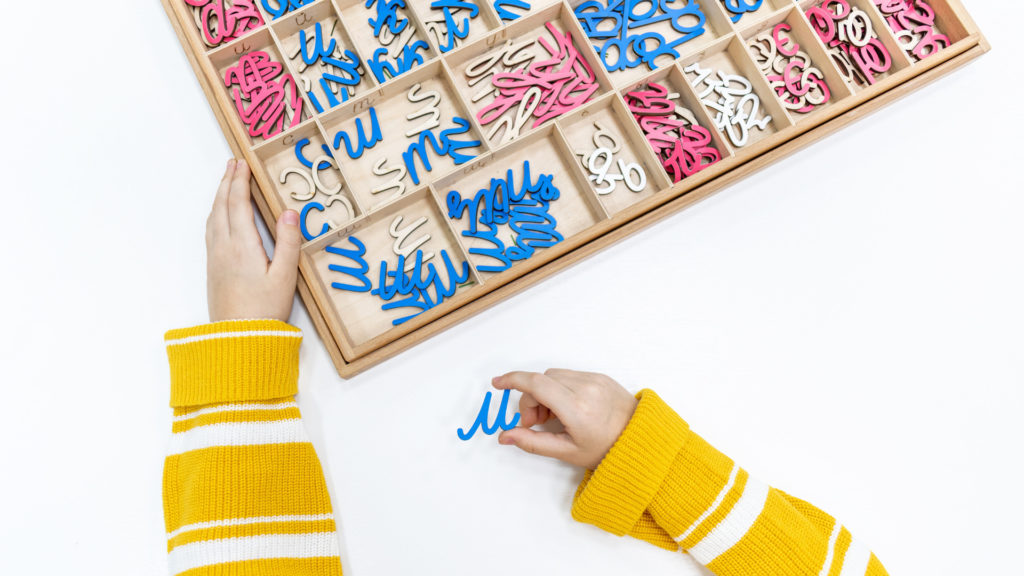Historically, children were taught to read through a process of memorizing the letter name but couldn’t read accurately. Today, children can easily read words and sentences. Have you ever thought about why? This is because children learn to read through advanced skills like phonics, which was missing in the education curriculum of the bygone era. Phonics knowledge is the most important skill for an early reader.
In the English language, there are two words called graphene and phoneme. Graphene is the letter symbol, while a phoneme is the letter sound. Some children know the names of most letters but don’t know the sounds. Thus, causing difficulty in reading and writing. Learning phonics at an early age helps children develop better reading habits.
What is Phonics?
Phonics is a reading method that allows children to learn the sounds of letters and understand how these sounds are used individually and in combination with other letters. It is a stepping stone for language acquisition and development.
Deploying phonetic education at an early age helps children develop cultural, social, and emotional skills.
When the letter symbol matches the sound of a letter, it is called decoding of phonics.
For example:
The letter ‘h’ makes the sound ‘/h/’
The letter ‘a’ makes the sound ‘/a/’
The letter ‘t’ makes the sound ‘/t/.’
When the child combines them, they make a word. ‘hat.’
There are 44 phonics sounds and only 26 letters. Phonetic sounds are necessary for the child to read and spell letters at an early age. It is introduced with single letter sounds, two-letter sounds, or three-letter sounds to form one sound. Most words children have to decode are three-letter words and they are easily decoded.
The sound of individual letters differs from the number of phonetic sounds. Phonics can sometimes be confusing. Similar letter sounds are used in different ways.
Another example is illustrated by the sound of letter s.
- In the word ‘sit,’ the sound produced is ‘/s/.’
- In the word ‘mess,’ the sound produced is ‘/ss/.’
- In the word ‘rose,’ the sound produced ‘/s/,’ and e is silent.
Sounds like Phonics are the Most Efficient Way to Learn a Language, Right?
No, they are not the best way to learn a language. The best way is to have an educator who not only helps with the sounds, but also with vocabulary and sentence construction. We all have come across a few children reading the alphabet with their sounds and not their names. Wondering, what made the shift from the traditional ABCD rhyme to this new “say-the-sound” method?
The shift in the method is not new. Instead, it dates to the 1900s and begins as a part of the beautiful Montessori curriculum devised by Dr. Maria Montessori. The reading method was coined as “phonics.” Phonics is the heart and soul of the Montessori curriculum. It is simple, fun, and in-depth that the child develops the eagerness to explore more than being forced into it by an educator.
Phonics is one of the best-known methods to learn a language, especially during a child’s early development. It helps the child read the words through the sound it produces that crosses their path. Learning the alphabet first is not an accurate way for a child to read, as they cannot link unfamiliar words to their spoken knowledge. It doesn’t draw attention to the details of the letters and the word. Therefore, the child finds difficulty in identifying the same word again.
The alphabet approach encourages rote memorization based on a child’s visual memory of individual words. For example, Children will recognize and memorize words like ‘pig,’ ‘big,’ and ‘dig,’ as three separate vocabulary words. They would not link any other words containing the part ‘-ig’ (e.g., ‘fig’) and have a similar sound at the end. Thus, the right pronunciation is very important for a child to read to make sense out of words.
How are Phonics Introduced in a Montessori Environment?
In a Montessori environment, language plays a very vital role and various activities help to develop the child’s vocabulary. A child is introduced to the sounds of the consonants first and then vowels to read the whole word. The method of CVC is followed (Consonant-Vowel-Consonant).
Once the child starts building words on their own, they are introduced to sight words to help them read sentences and stories. In the Montessori environment, sounds of letters (also known as phonetics) are introduced through multi-sensory activities. First, each letter sound is introduced to the child using pictures and objects.
Watch these videos to learn how to pronounce letters with the pronunciation resources.
While introducing the letter sound, the child will trace and feel the sandpaper letters. For example, the letter ‘c’ produces a sound as ‘/c/’ and not ‘/cuh/.‘ The letter ‘l’ produces a sound as ‘/l/’ and not ‘/luh/’.
In Montessori education, phonics is introduced with the “Three Period Name Lesson.” Once the child learns how to trace the letter through sandpaper, a Movable Alphabet Box is introduced.
With a Moveable Alphabet Box, it is easy for a child to combine two-letter sounds to make another new sound. These are called phonograms.
After introducing the phonograms, a phonogram box is introduced. It is just as magical as the movable alphabet box. The phonogram box makes the child fall in love with reading. At this stage, the child can now decode hard words like rain, trail, boat, etc. This magical material also teaches the correct phonetic pronunciation of two or three phonetic letter sounds.
The Montessori method does not stop introducing and making words by analyzing the letter sounds and phonetic sounds. There are phonetic reading cards to apply their knowledge and thinking skills. Later the child will read sentences and then small storybooks, apart from other exciting activities that help the child develop their overall personality. Thus, the Montessori method is the ideal learning program for language.
Benefits of Introducing Phonics at an Early Age:
- It helps in gradual reading without memorizing many words and making the process ever-exhausting.
- It helps to develop logic, reasoning, and analysis skills.
- The child can comprehend and apply what they have learned independently and confidently through phonetics.
- It helps in whole-word recognition; allows a child to read faster as they practice and become experts in reading.
- It teaches patience and concentration.
Don’t believe it yet? Try this out;
Give a simple word like “right” to a traditionally schooled 5-year-old child, and a child nurtured in Montessori. The former would find it difficult to read as in traditional schools; alphabets are introduced before phonics. The latter is introduced to the sound of letters; therefore, can easily use the phonogram family logic that “igh” makes the sound “i” as in ice cream. With that in mind, the child reads the word ‘rrr—iii—t (right).’
The method equips the child with a power that makes them self-sufficient with exceptions and a few sight words that don’t follow phonic sounds. It also helps them become explorers of books and knowledge with a thirst for more and more.
How to Practice Phonics at Home?
Three phonic sounds can be introduced at a time by parents. Repeat the phonetic sounds several times.
Practicing phonics with flashcards is a great idea. Encourage the child to read the road signs while at the market and allow them to decode the word. When a child understands the notion of phonetic sounds, the child will gain confidence. The parents can see how thrilled their children are to know what they read. It will also encourage the child to learn more new words through the sound that the letter produces. The ability to predict the pronunciation of many words based on letter-sound knowledge is definitely better than blindly memorizing the alphabet.
Let the child switch to the magic of phonics in their learning journey. Help them to become skilled readers. Visit GMN resources to know more about pronouncing letters correctly.












